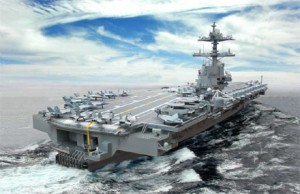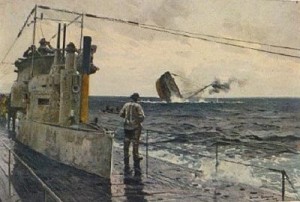
The U.S. Navy’s Littoral Combat Ship is now at an interesting but dangerous point of development. At least that’s one impression from reading Chris Cavas’s article in DefenseNews. The controversies surrounding LCS are not surprising taking into account the words of Sir Julian Corbett:
The truth is, that the classes of ships which constitute a fleet are, or ought to be, the expression in material of the strategical and tactical ideas that prevail at any given time, and consequently they have varied not only with the ideas, but also with the material in vogue.
LCS represents perhaps too radical a detachment from the dominating views in the Navy. So what is the right way to proceed? From the article in DefenseNews three options emerge:
1. Stop LCS orders at 25 ships. This would mean that the original need for an affordable littoral combatant, operated in packs, remains unfulfilled. This is an acceptable course if the need is no longer important, but is that the case? Some form of affordable and smaller combatant is still desired, I believe.
2. Turn LCS into “micro-Aegis”. This would mean attempting to make LCS into something it was never intended to be. Sooner or later it would lead to more balanced, but more expensive, frigate design. This would be like having an answer for a question never posed. To illustrate the problem and sharpen opinions — what attribute of the ship is more important for the Navy? One with a frigate’s capabilities, or an affordable one? Designing an affordable frigate is a very challenging task for naval architects and the history of modern Royal Navy is worth studying to understand this.
3. Fine-tune LCS’ design and concepts, aiming to minimize identified deficiencies while preserving affordability. The most criticized features seem to be weak armament, excessive modularity, and the inefficiency of having two different designs. Choosing this option would mean improving the answer for the known need. It is also an attempt to converge the concept of the littoral corvette with the “prevailing strategical and tactical ideas” within the Navy.
The proposal below is the result of admittedly amateurish play with module-like LEGO bricks and intends to achieve the desired effect by changing the base configuration as well as assigning missions in pairs to two different platforms. It means that instead of multi-mission or reconfigurable-but-single-mission ships, there would be “1.5 – 2 mission” ships, with one mission permanent and one modular. Which module should be assigned to which platform is a question of not only effectiveness but also safety. The following statement comes from an analysis of the U.S. Navy’s experimental twin-hull Sea Fighter (FSF-1):
The RHIB is launched and recovered at ship speeds not exceeding 5 kts. At speeds less than 15 kts Sea Fighter’s ride quality is reduced. Ship motions at 5 kts sometimes causes the end of the stern ramp to emerge from the water, which makes recovering the boat a challenge at best and dangerous at worst. A missed approach (to the ramp) could result in the boat being trapped under the water-jet guards.
If that is an inherent feature of multi-hull ships, then launch and recovery of Unmanned Surface Vehicles (USVs) or Unmanned Undersea Vehicles (UUVs) should be the domain of the classic monohull design, in spite of the larger bay in the trimaran. Based on such an assumption, Independence would perform two roles – Maritime Security Operations in low-level threat environments and ASW corvette in wartime, while Freedom’s envisioned role would be anti-surface warfare (ASuW) and mine warfare. Both versions could operate together in pairs. I propose extending the base configuration of the trimaran including SeaRAM along with 30mm guns and a mine reconnaissance UUV like Bluefin 21. Replacing the Griffin launcher with vertically launched RAM Block 2 in the extensible launching system (ExLS) offers improved self defense against multi-axis attacks while retaining flexibility in mixing RAM with Griffin, which is possible to fire from modified Mk 49 launcher.
For Freedom, I propose replacing the 30mm guns with Harpoon missiles, an action already put forward by both Chris Cavas and Bryan McGrath in Information Dissemination. Such configuration is intended to be fixed, while ASW and MIW remain in module form. This way we get a classic ASW corvette and much bigger Visby-like littoral combatant. Applying 8- or 16-cell vertical launchers is welcome, but its cost should be checked against affordability criteria. In fact such a move means extending modularity into the ammunition area rather then limiting it. This is a case for developing a VLS Harpoon and Bryan McGrath makes a good point about it in Information Dissemination. It makes sense however only if there is a large number of smaller combatants to carry such weapon.
Operating two different variants may be a “glaring inefficiency”, but only from an economical point of view. Tactically, having a variety of features could be advantageous. The interesting side effect of above LEGO bricks play is turning LCS into a model littoral corvette, which could become of some interest for other navies considering procurement options.
Przemek Krajewski alias Viribus Unitis is a blogger In Poland. His area of interest is broad context of purpose and structure of Navy and promoting discussions on these subjects In his country




